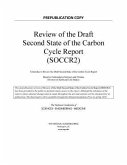For more than 75 years, high-hazard structures in the U.S., including dams and nuclear power plants, have been engineered to withstand floods resulting from the most unlikely but possible precipitation, termed Probable Maximum Precipitation (PMP). Failure of any one of the more than 16,000 high-hazard dams and 50 nuclear power plants in the United States could result in the loss of life and impose significant economic losses and widespread environmental damage, especially under the pressures of climate change. While PMP estimates have provided useful guidance for designing critical infrastructure, weaknesses in the scientific foundations of PMP, combined with advances in understanding, observing, and modeling extreme storms, call for fundamental changes to the definition of PMP and the methods used to estimate it. Modernizing Probable Maximum Precipitation Estimation recommends a new definition of PMP and presents a vision for a methodology relevant for design, operation, and regulation of critical infrastructure. The new definition targets precipitation depths with an extremely low exceedance probability instead of assuming rainfall is bounded, and considers specified climate periods so that PMP estimates can change as the climate changes. Near-term enhancements to PMP include improved data collection, model-based storm reconstructions, and strengthened scientific grounding for PMP methods. Long-term model-based PMP estimation will employ kilometer-scale climate models capable of resolving PMP storms and producing PMP-magnitude precipitation. A Model Evaluation Project will provide scientific grounding for model-based PMP estimation and determine when transition to a model-based PMP estimation should occur. Scientific and modeling advances along this front will contribute to addressing the societal challenges linked to the changes in extreme storms and precipitation in a warming climate, which are critical steps to ensuring the safety of our infrastructure and society.
Hinweis: Dieser Artikel kann nur an eine deutsche Lieferadresse ausgeliefert werden.
Hinweis: Dieser Artikel kann nur an eine deutsche Lieferadresse ausgeliefert werden.








